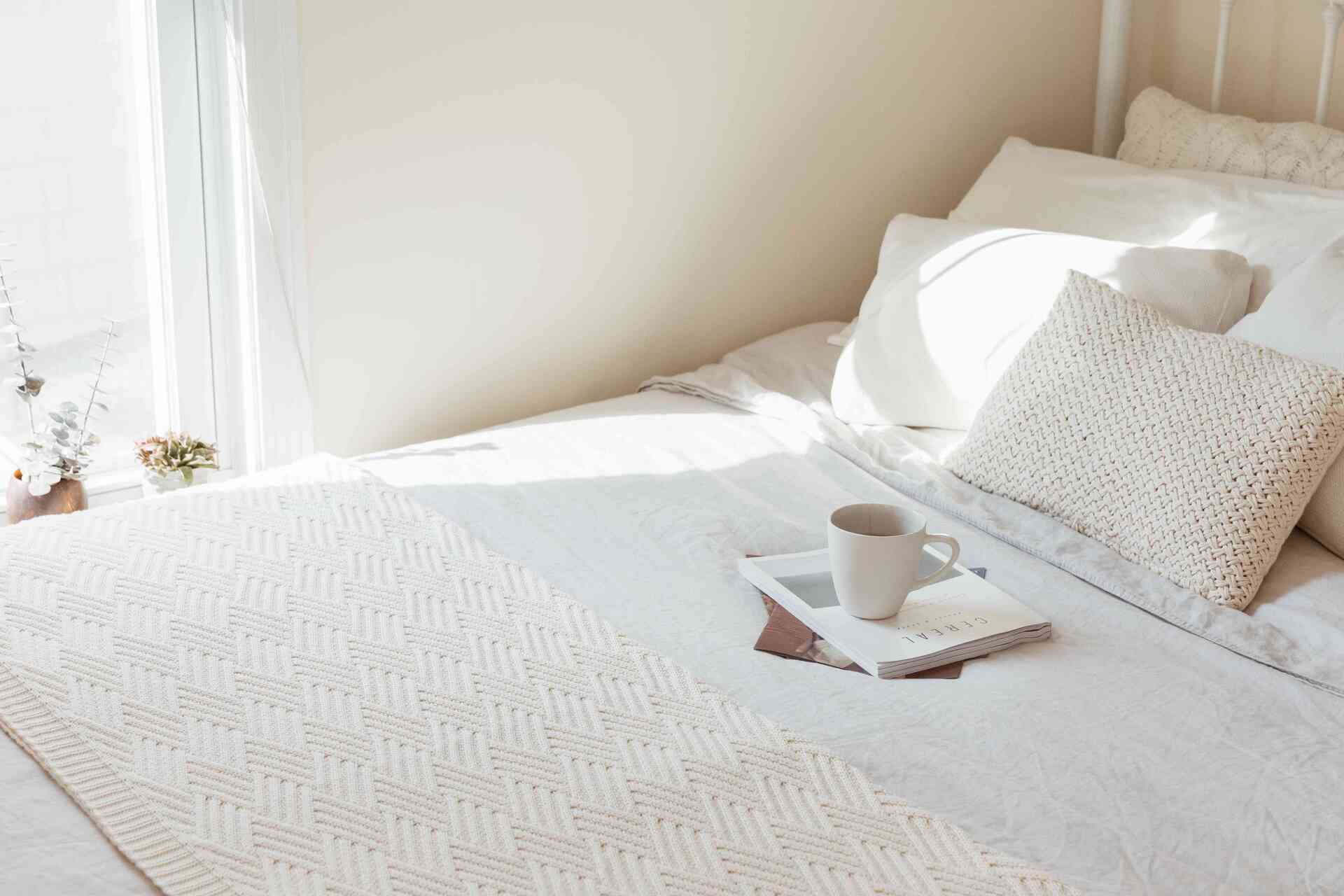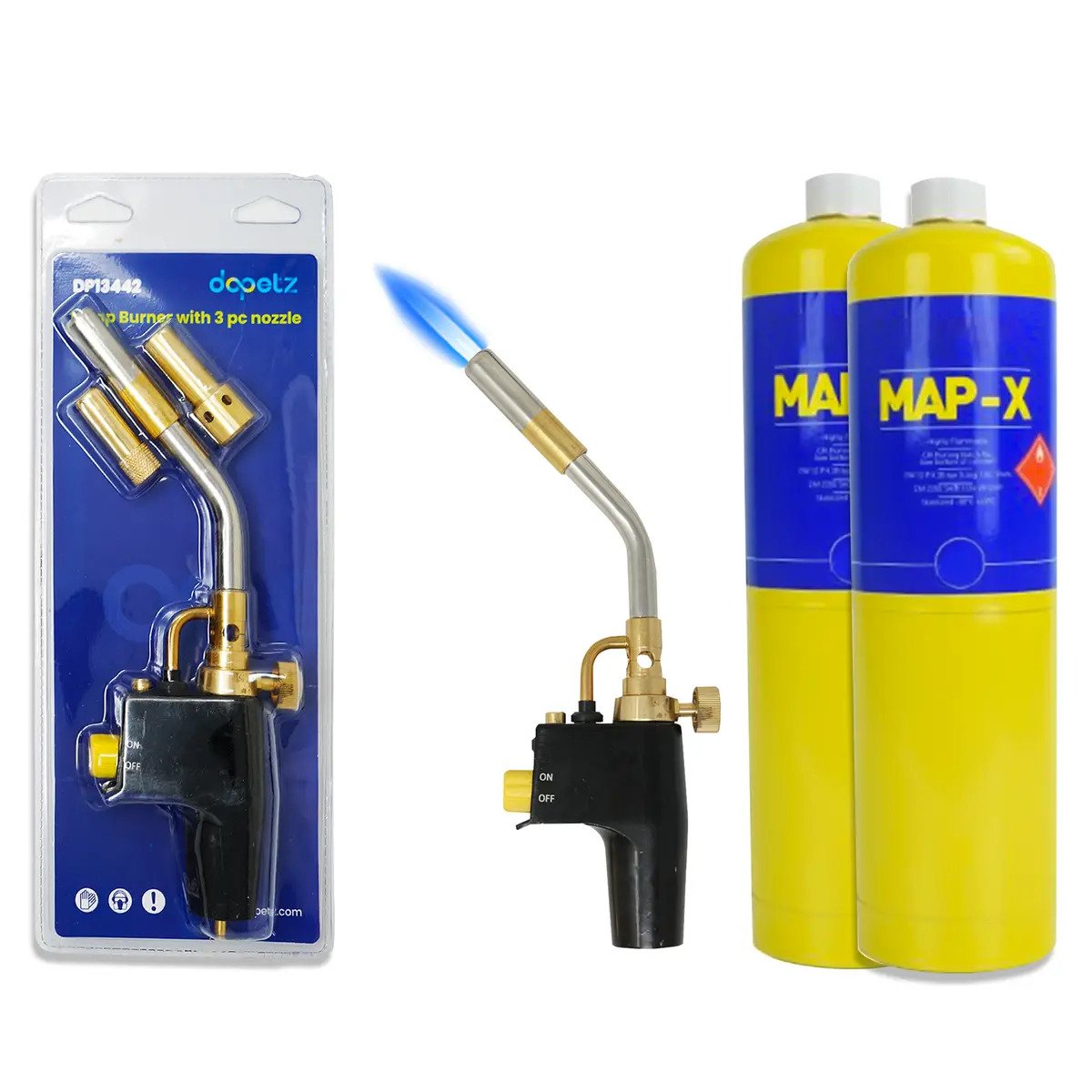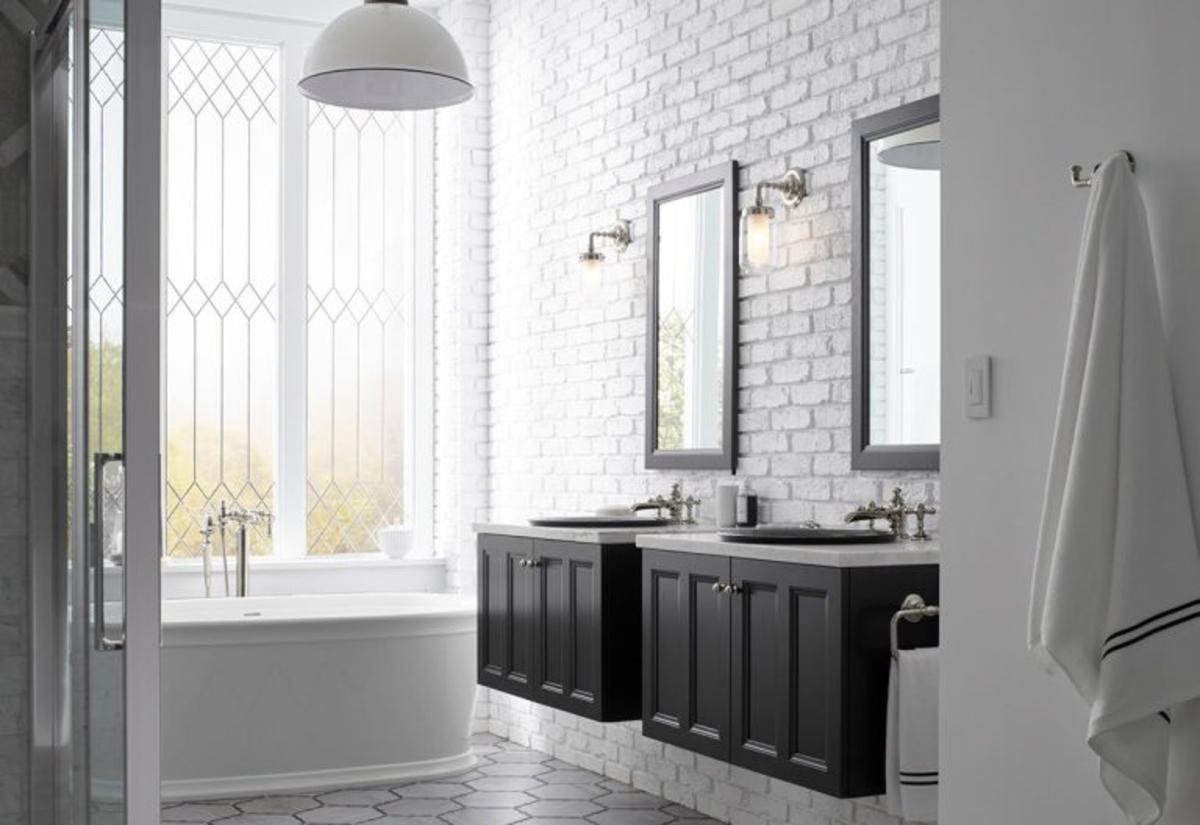Home>Furniture & Design>Interior Design Trends>How To Heat Glass Without A Torch


Interior Design Trends
How To Heat Glass Without A Torch
Modified: August 28, 2024
Discover the latest interior design trends with our guide on how to heat glass without a torch. Explore innovative techniques for creating stunning glass art.
(Many of the links in this article redirect to a specific reviewed product. Your purchase of these products through affiliate links helps to generate commission for Storables.com, at no extra cost. Learn more)
Introduction
Heating glass without a torch may seem like a daunting task, but with the right techniques and tools, it can be achieved effectively and safely. Whether you're a glass artist looking to manipulate glass in unique ways or a DIY enthusiast seeking to explore new crafting methods, there are several alternative methods to heat glass without relying on a traditional torch.
In this comprehensive guide, we will explore various innovative approaches to heating glass, each offering its own set of advantages and considerations. From utilizing a kiln to harnessing the power of a hot plate, microwave, or even a candle, there are diverse methods that cater to different needs and preferences. By understanding the intricacies of each technique, you can expand your creative horizons and experiment with heating glass in unconventional yet rewarding ways.
Throughout this article, we will delve into the specifics of each method, providing step-by-step instructions and valuable insights to help you navigate the process with confidence. Whether you're a seasoned glass artisan or a curious beginner, this guide aims to equip you with the knowledge and inspiration to embark on your glass-heating journey without the need for a traditional torch. So, let's embark on this fascinating exploration of alternative glass-heating methods and unlock the potential for innovative glasswork without boundaries.
Key Takeaways:
- Unleash Your Creativity: Explore innovative ways to heat glass without a torch, from using a kiln for precision to a candle for artisanal charm. Embrace diverse methods and elevate your glass artistry!
- Artistic Adventure Awaits: Discover the magic of heating glass with a hot plate, microwave, or candle. From controlled precision to hands-on artistry, explore unconventional methods and ignite your creative spark!
Read more: How To Fix Glass Pipe With Torch
Using a Kiln
Heating glass using a kiln is a versatile and precise method that offers a controlled environment for achieving consistent and uniform heating. Kilns are commonly used in glass fusing, slumping, and other glass art techniques, making them a popular choice for artists and hobbyists alike. Here's a detailed look at the process of heating glass using a kiln:
-
Preparation: Before heating the glass in a kiln, it's crucial to prepare the kiln shelf by cleaning it thoroughly to ensure that the glass will not be contaminated during the heating process. Additionally, the glass pieces should be cleaned and arranged on the kiln shelf according to the desired design or pattern.
-
Programming the Kiln: Kilns are equipped with programmable controllers that allow users to set specific heating and cooling cycles. Depending on the type of glass and the desired outcome, the kiln's temperature and heating duration can be programmed accordingly. This level of precision enables artists to achieve consistent results and execute complex glass-fusing techniques with ease.
-
Heating Process: Once the kiln is programmed, the heating process begins. The kiln gradually ramps up the temperature to the desired level, allowing the glass to heat evenly and prevent thermal shock. This controlled heating process is essential for avoiding cracks or distortions in the glass, ensuring that the final outcome meets the artist's expectations.
-
Annealing and Cooling: After the glass has been heated to the desired temperature, it undergoes an annealing process to relieve internal stresses and strengthen its structure. The kiln's cooling cycle is then initiated, gradually reducing the temperature to prevent rapid temperature changes that could compromise the integrity of the glass.
-
Safety Considerations: When using a kiln to heat glass, it's important to adhere to safety guidelines, including wearing protective gear and ensuring proper ventilation in the workspace. Kilns generate high temperatures, so it's crucial to handle them with caution and follow recommended safety practices to minimize the risk of accidents.
Heating glass in a kiln offers a level of precision and control that is well-suited for intricate glass art projects. Whether creating fused glass jewelry, decorative art pieces, or functional glassware, the kiln provides a reliable and efficient means of achieving stunning results. By mastering the art of kiln-fired glasswork, artists can unleash their creativity and explore the boundless potential of this captivating medium.
Using a Hot Plate
Heating glass using a hot plate offers a simple yet effective alternative to traditional torch methods. This approach is particularly suitable for small-scale glass projects and provides a controlled heating surface for manipulating glass without the need for specialized equipment. Here's a detailed look at the process of heating glass using a hot plate:
-
Preparation: Before heating the glass on a hot plate, it's essential to prepare the work area and ensure that the hot plate is clean and free from any debris that could affect the glass. Additionally, the glass pieces should be cleaned and arranged on the hot plate in a manner that allows for even heating and easy access for manipulation.
-
Setting the Temperature: Hot plates typically feature adjustable temperature settings, allowing users to select the appropriate level of heat for the glass. It's important to start with a low temperature and gradually increase it to avoid thermal shock, which can cause the glass to crack or shatter. By carefully monitoring the temperature, artists can ensure that the glass heats uniformly and reaches the desired malleable state.
-
Heating Process: Once the hot plate is set to the desired temperature, the heating process begins. The glass is placed on the hot plate, and the heat gradually softens it, making it pliable for shaping, bending, or fusing. Artists can use tools such as glass cutters, molds, or tweezers to manipulate the heated glass and create intricate designs or forms.
-
Cooling and Annealing: After the glass has been shaped or manipulated on the hot plate, it undergoes a cooling and annealing process to stabilize its structure. This involves carefully transferring the heated glass to a designated annealing area or kiln, where it is slowly cooled to room temperature to relieve internal stresses and prevent cracking.
-
Safety Precautions: When using a hot plate to heat glass, it's important to prioritize safety. This includes using heat-resistant gloves and protective eyewear to handle the hot glass and being mindful of the hot plate's surface temperature. Adequate ventilation in the workspace is also crucial to dissipate any fumes or odors generated during the heating process.
Heating glass on a hot plate provides a convenient and accessible method for artists and enthusiasts to explore the creative possibilities of glass manipulation. Whether experimenting with glass fusing, bending, or sculpting, the hot plate offers a versatile platform for bringing artistic visions to life through the transformative power of heated glass. With careful attention to temperature control and safety measures, heating glass on a hot plate can open up a world of artistic expression and innovation without the need for a traditional torch.
You can heat glass without a torch by using an oven or a kiln. Place the glass in the oven and slowly increase the temperature to around 900-1000°F. Be sure to wear heat-resistant gloves when handling the hot glass.
Using a Microwave
Heating glass using a microwave may seem unconventional, but it can be a surprisingly effective method for achieving controlled glass manipulation without the need for a traditional torch. While microwaves are primarily associated with heating food, they can also be utilized to heat glass in a controlled and precise manner, making them a versatile tool for artists and DIY enthusiasts. Here's a detailed look at the process of heating glass using a microwave:
-
Preparation: Before heating glass in a microwave, it's essential to prepare the glass pieces and the microwave-safe container. The glass should be clean and free from any contaminants, and it should be placed in a suitable container that can withstand the heating process without compromising the glass or the microwave.
-
Selection of Glass: Not all types of glass are suitable for heating in a microwave. It's important to use microwave-safe glass that is specifically designed to withstand high temperatures without cracking or shattering. Borosilicate glass, commonly used in laboratory glassware and certain kitchen products, is a suitable choice for microwave heating due to its thermal durability.
-
Heating Process: When heating glass in a microwave, it's crucial to use a gradual and controlled approach to avoid thermal shock. The glass should be placed in the microwave and heated in short intervals, allowing time for the heat to distribute evenly throughout the glass. Careful monitoring of the heating process is essential to prevent overheating and ensure that the glass reaches the desired malleable state without undergoing structural damage.
-
Manipulation and Shaping: Once the glass has been heated to a pliable state, it can be carefully removed from the microwave and manipulated using specialized tools or molds. Whether shaping the glass into intricate forms or fusing multiple glass pieces together, the microwave heating process provides a unique opportunity for artistic expression and experimentation.
-
Cooling and Annealing: After the glass has been manipulated, it undergoes a controlled cooling and annealing process to stabilize its structure and relieve internal stresses. This may involve transferring the heated glass to an annealing kiln or a designated cooling area where it can gradually return to room temperature, ensuring its long-term stability and durability.
Heating glass in a microwave opens up new possibilities for artists and enthusiasts seeking innovative methods of glass manipulation. By leveraging the controlled heating capabilities of a microwave, individuals can explore the transformative potential of heated glass without the need for specialized torch equipment. With careful attention to safety and the selection of suitable glass materials, the microwave emerges as a surprisingly versatile tool for heating glass and unlocking creative opportunities in the realm of glass artistry.
Using a Candle
Heating glass using a candle introduces a rustic yet captivating approach to glass manipulation, offering a method that is accessible and imbued with a sense of artisanal charm. While candles are traditionally associated with illumination and ambiance, they can also serve as a source of controlled heat for shaping and manipulating glass without the need for elaborate equipment. Here's a detailed exploration of the process of heating glass using a candle:
-
Preparation: Before commencing the heating process, it's essential to create a suitable work area and ensure that the candle is positioned on a stable, heat-resistant surface. Additionally, the glass pieces to be heated should be cleaned and arranged within a safe distance from the candle's flame, allowing for easy access and manipulation.
-
Selection of Glass: When using a candle to heat glass, it's important to choose glass materials that are conducive to controlled heating and manipulation. Thin glass rods or small glass pieces are particularly well-suited for this method, as they can be carefully heated and shaped using the gentle, focused heat of the candle's flame.
-
Heating Process: The candle's flame provides a localized source of heat, allowing for precise control over the heating of the glass. By gently rotating the glass near the candle's flame, the heat gradually softens the glass, making it pliable for bending, shaping, or fusing. This method requires patience and attentiveness to ensure that the glass is heated uniformly without encountering thermal stress.
-
Manipulation and Shaping: As the glass reaches a malleable state, it can be carefully manipulated using heat-resistant tools or molds to create intricate designs or forms. The gentle, nuanced heat from the candle enables artists to engage in hands-on glass manipulation, fostering a tactile and immersive creative experience.
-
Cooling and Annealing: After the glass has been shaped or manipulated, it undergoes a controlled cooling and annealing process to stabilize its structure and relieve internal stresses. This may involve allowing the heated glass to gradually cool in a designated annealing area, ensuring its long-term stability and durability.
Heating glass using a candle embodies a sense of artistry and resourcefulness, offering a hands-on approach to glass manipulation that resonates with the spirit of craftsmanship. This method invites artists and enthusiasts to engage with the transformative power of heated glass in a manner that is both intimate and evocative. By harnessing the gentle heat of a candle's flame, individuals can explore the art of glass manipulation in a way that honors tradition and invites creative expression without the reliance on conventional heating tools.
Conclusion
In conclusion, the realm of glass artistry and creative expression extends far beyond the traditional use of a torch for heating and manipulating glass. By exploring alternative methods such as kiln heating, hot plate manipulation, microwave techniques, and candle-based artistry, artists and enthusiasts can embark on a journey of innovation and discovery. Each approach offers its own unique blend of precision, accessibility, and artisanal charm, presenting diverse avenues for realizing artistic visions without the constraints of conventional torch-based heating.
The use of a kiln for heating glass stands out as a pinnacle of precision and control, providing artists with the means to execute intricate glass-fusing techniques and achieve consistent, high-quality results. The programmable nature of kiln heating allows for meticulous temperature control and annealing, laying the foundation for the creation of stunning fused glass art and functional pieces.
On the other hand, the hot plate emerges as a versatile and accessible tool for small-scale glass projects, offering a controlled heating surface that empowers artists to experiment with glass fusing, bending, and sculpting. Its adjustable temperature settings and straightforward operation make it an appealing option for those seeking a user-friendly approach to glass manipulation.
The unconventional yet effective use of a microwave for heating glass opens up new horizons for artists and DIY enthusiasts, showcasing the adaptability of this everyday appliance as a tool for controlled glass heating. By leveraging the gradual and controlled heating capabilities of a microwave, individuals can explore the transformative potential of heated glass without the need for specialized torch equipment.
Furthermore, the artisanal allure of heating glass using a candle speaks to the timeless appeal of hands-on craftsmanship and resourceful artistry. This method invites individuals to engage with the tactile and immersive experience of shaping and manipulating glass through the gentle, nuanced heat of a candle's flame, fostering a connection to the art form that transcends traditional techniques.
In essence, the exploration of alternative glass-heating methods not only expands the creative repertoire of artists but also invites a deeper appreciation for the artistry and ingenuity inherent in the world of glass manipulation. By embracing these diverse approaches, individuals can unlock new dimensions of artistic expression, innovation, and craftsmanship, ushering in a renaissance of glass artistry that transcends the boundaries of traditional torch-based heating.
Frequently Asked Questions about How To Heat Glass Without A Torch
Was this page helpful?
At Storables.com, we guarantee accurate and reliable information. Our content, validated by Expert Board Contributors, is crafted following stringent Editorial Policies. We're committed to providing you with well-researched, expert-backed insights for all your informational needs.















0 thoughts on “How To Heat Glass Without A Torch”